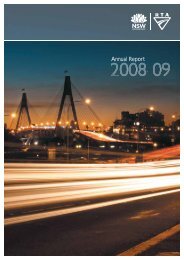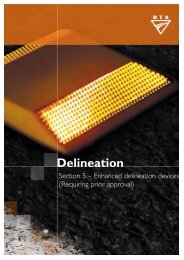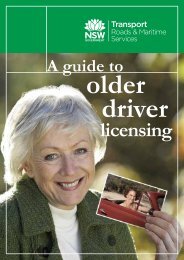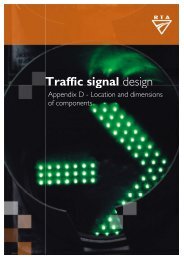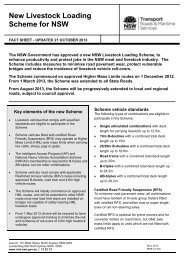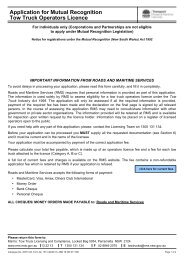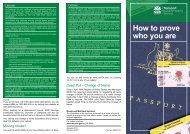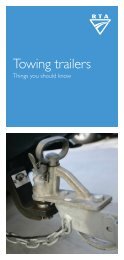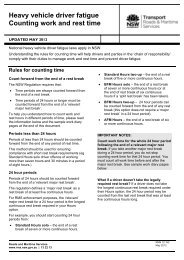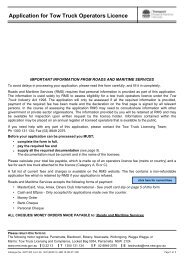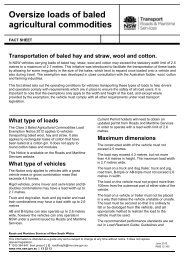Hazard perception handbook - RTA
Hazard perception handbook - RTA
Hazard perception handbook - RTA
You also want an ePaper? Increase the reach of your titles
YUMPU automatically turns print PDFs into web optimized ePapers that Google loves.
4<br />
32<br />
keeping a safe following distance<br />
The distance that it will take you to stop your car depends on the speed at which you<br />
are travelling. The faster you go, the longer the stopping distance. for example, you<br />
need almost twice the distance to stop from 90 km/h compared with stopping from<br />
60 km/h, even in the best possible driving conditions – that is, on a sealed, dry road.<br />
Stopping distance.<br />
Distance in metres<br />
<strong>Hazard</strong> <strong>perception</strong> <strong>handbook</strong><br />
150<br />
100<br />
50<br />
0<br />
60 km/h 90 km/h<br />
Initial speed (km/h)<br />
This means that you must increase the following distance between you and the<br />
vehicle ahead as you increase speed. If you don’t do this you may crash into the back<br />
of the vehicle ahead if it has to stop quickly. This type of crash happens to a lot of<br />
provisional drivers in NSW each year, but there’s an easy way to avoid this. It’s called<br />
the three second rule.



